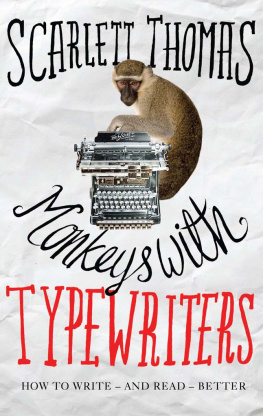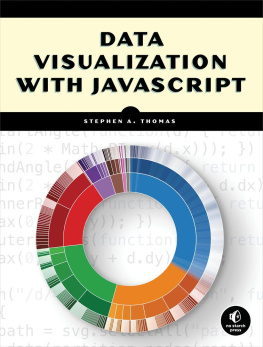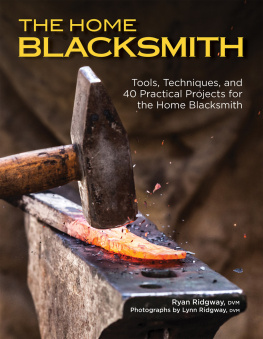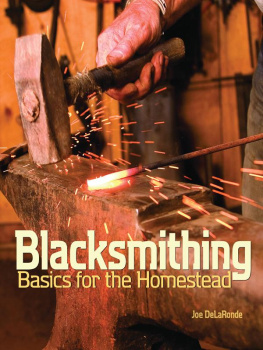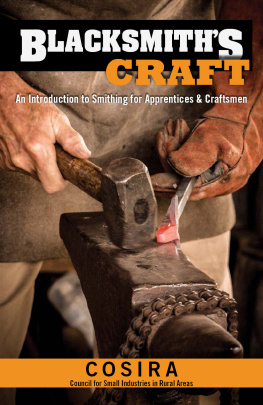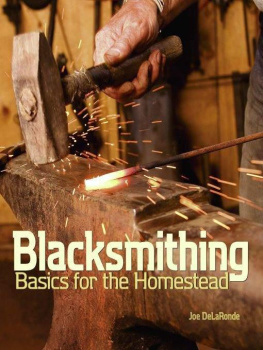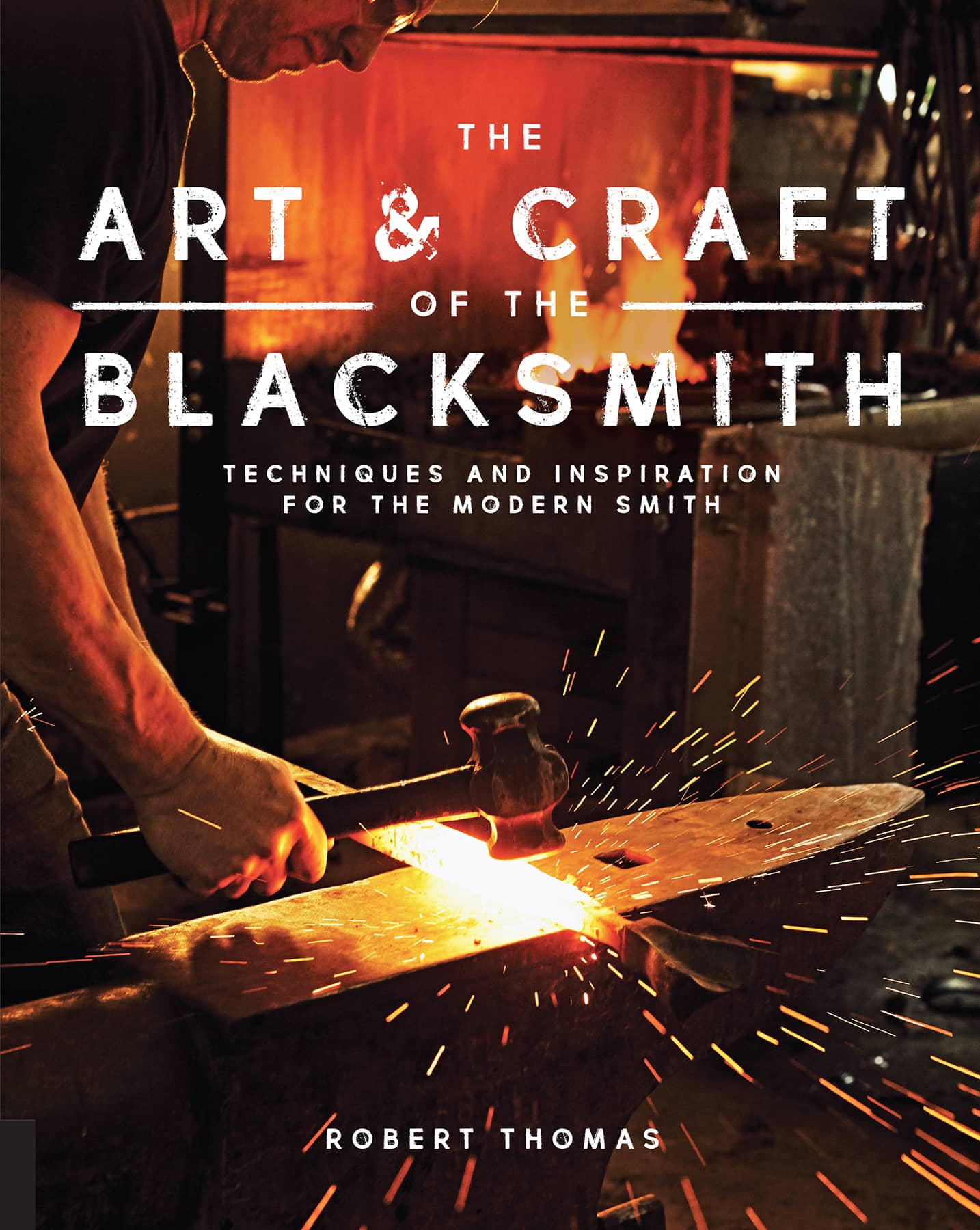Smithing can be a dangerous activity. Failure to follow safety procedures may result in serious injury or death. This book provides useful instruction, but we cannot anticipate all of your working conditions or the characteristics of your materials and tools. For your safety, you should use caution, care, and good judgment when following the procedures described in this book. Consider your own skill level and the instructions and safety precautions associated with the various tools and materials shown. The publisher cannot assume responsibility for any damage to property or injury to persons as a result of misuse of the information provided.

Meet the Robert Thomas Iron Design team: left to right: Tyler Bickerstaff, J. Powers Shepard, Matt Garton, and Robert Thomas.
ONE OF MY FAVORITE ASPECTS OF THE CRAFT OF BLACKSMITHING IS THE SENSE OF COMMUNITY THAT GROWS FROM INVOLVEMENT IN THE VARIOUS NATIONAL AND INTERNATIONAL BLACKSMITH ORGANIZATIONS. MANY OF THESE ORGANIZATIONS HOST LARGE FESTIVALS AND COMPETITIONS THROUGHOUT NORTH AMERICA AND EUROPE. IT IS AT THESE EVENTS THAT FRIENDSHIPS ARE BORN AND TECHNIQUES ARE SHARED THAT INEVITABLY LEAD TO INNOVATION WITHIN THE CRAFT. THEY ARE ALSO A GREAT PLACE TO PARTY.
STEEL CAN TAKE ON NO OTHER FORM THAN ITS CURRENT ONE FOR THE PERSON WHO CANNOT WORK WITH IT. BUT ANY FORM IS ITS CURRENT ONE FOR THE MACHINIST OR BLACKSMITH.
Robert M. Pirsig, Zen and the Art of Motorcycle Maintenance
One such festival, called Hefaiston, in the Czech Republic, hosts blacksmiths from around the world for an open forum, competition, and exhibition of the best work in the world. During my first trip to the festival, I ended up at a bar full of blacksmiths after a day of competitive forging listening to stories from forges around the world. After a lengthy discussion about the merits of a career in blacksmithing, a Swedish blacksmith leaned over the table and asked, Whats the difference between blacksmithing and heroin?
Looking up from my giant glass of pilsner, I replied, I dont know.
You can quit heroin! he said with a big grin on his face.
This was still relatively early in my journey as a blacksmith, but I knew he was right. I knew it the first time I ever struck a piece of hot steel years earlier. Pulling that first 2,000-degree bar out of the fire and watching it mold like modeling clay under the hammer, I knew I would never be able to quit.
Up until that point in my life, everything I had ever done, every job or career I tried my hand at, felt temporary, transitionalokay until I found something more exciting. Within an instant of forging my first piece of hot steel, I knew it was what I wanted to do for the rest of my life. I didnt quite understand how I would make it a career or what work I would producethat would come later. I just knew I wanted to forge.
In talking to other smiths over the years, Ive come to realize my experience was not unique. Many great smiths around the world were doing something else until they forged for the first time and then everything changed. Forging has a way of taking hold of you until it becomes part of who you are.
Blacksmiths have been forging metal for thousands of years, and we still havent done it all. For me, that knowledge makes the craft especially inspiring. I know I will never totally master this craft because it can never be totally mastered. As soon as I pursue all I can in one direction, Ill realize there is more to pursue somewhere else. This means it can never get dull; it can never get monotonous. There will always be some aesthetic to chase, some technique to perfect, and something to strive for. I will always be a student of the craft.
My career is not about attaining masteryits about pursuing it.
Within weeks of that first forging session, I was on a plane flying to England for my interview at Hereford College of Arts for their Artistic Blacksmithing degree program. During my time in Hereford, I learned how to work with the anvil and the sketchbook to develop an aesthetic style. After school, working in commercial shops, I learned how to translate that style into production ironwork.
My journey as a blacksmith has always been exciting and allowed me to meet and work with incredible blacksmiths from all over the world. Along the way, Ive even been able to convince some of them to come work with me. Ive been very fortunate, and now I have a very well equipped forging studio and a great team of blacksmiths to work with everyday. My work is an ever evolving expression of who I am as an artist, but it is the Robert Thomas Iron Design (RTID) team that makes the expression possible. I really dont even think of myself as a singular artist very much anymore since almost everything I create is a collaboration with the RTID team: Tyler Bickerstaff, Matt Garton, J. Powers Shepard, and myself. Power hammers and hydraulic presses are great, but no tool can replace the support and enthusiasm of a fellow blacksmith.
I am often asked if its still as exciting as it used to beworking with the fire and swinging a hammer and getting dirty. The short answer is yes. No matter what else I have going on in my day, from client meetings to design work, when I finally get on that fire and watch the material squish and deform and stretch, its as if there is nothing elseonly me, the fire, and the steel. Its like being a kid playing in a sandbox.
People also ask, Isnt it hard work? Yes.
Isnt it hot? Yes.
Dont you get burned? Yes.
Arent there easier ways to make a living? Definitely yes!
They rarely ask, Why do you do it? Instead they say something like, That must be the coolest job ever! I wish I could do that.
To which I say: You can. A blacksmith can come from anywhere and start with any background. All you have to do is pick up the hammer and put in the hours.
INTENT
What I seek to achieve in writing this book is to offer a primer for craftspeople who may have had a taste of basic blacksmithing techniques and are now hoping to bring their practice to the next level. Well look at iron as a tool and medium and dig into some of the subject matter that youll need to know to gain a deeper understanding of your craft. And lastly, well go through some basic, intermediate, and advanced techniques and then work through projects specifically designed to use those skills.
The goal of this book is to present the blacksmiths craft within a modern, professional context: to present blacksmithing in such a way that provides the reader with the perspective on how to contribute to the world of current design using blacksmithing techniques to create large and small pieces of functional art that stand on design as well as craftsmanship.


